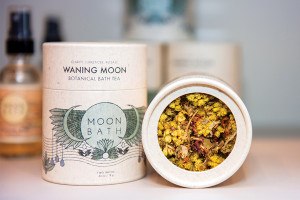Get Ready for Broad Street!: Ease Your Race-Day Worries
 You always hear that you should eat pasta before a race. Is this true?
You always hear that you should eat pasta before a race. Is this true?
For a 10-mile race you don’t need to carb load. The run should burn about 1,000 calories (kind of disappointing, huh?) and your muscles normally store double that in ready energy. Marathoners need to try to boost their stores by loading up for a few days before their event.
You do want to eat something the night before the race that you are comfortable with, and that your stomach is comfortable with. Try testing some foods out before your long runs. I went through a phase where I only ate pizza the night before races, then turkey clubs. But don’t feel you need to force down extra calories or stuff yourself, since you might not feel as good in the morning. Save that for after the race.
What about water? Should I be drinking more the week before?
Hydration is always important—and the week leading up to a race you should really focus on drinking plenty of fluids. Plain water is ideal, but juices and sports drinks can work if it will make you drink more. Someone who normally drinks coffee every morning should keep drinking it (I was happy to hear the most recent research shows coffee doesn’t dehydrate you). Hopefully all of your readers keep a reasonably healthy diet and only have an occasional soda. The week of the race is a time to be consistent, you don’t want to cut things out or change your diet if you don’t know how your body will react to the changes (caffeine withdrawal, etc.).
I have a feeling that I am going to be wired the night before. Any tips that might help you relax the night before so you get a good night’s sleep?
Sleep is a bit like the hydration thing—you need to get sleep all week. Try to go to bed at your normal time—trying to go to bed before you are ready to sleep can leave you lying there, wondering when you will get to sleep. If you go at your normal time, you should fall asleep like normal.
I am usually a great sleeper, but I have had some bad nights before races, and the races still went well. It helps having that experience so you can reassure yourself that things will go well. The other thing to tell yourself is how great it feels to just lay down and not have to do anything! Simply lying in bed will give your body the rest it needs, and if you don’t sleep as much as normal the night before, your body will still be ok.
I also advise doing the things you normally do at night, if you normally have a glass of wine with dinner, still have the glass of wine (but keep that water handy).
What time should I wake up on race day?
You should be up two to three hours before a race starts. This gives your body some time to warm up, and you can eat a light breakfast and be ready to go for the race. If you are taking the train from the Broad Street finish to the start, you need to get there early anyway. I usually eat my breakfast (and coffee) on the way, and bring another snack, like a banana, for while I’m waiting for the start.
So I should eat breakfast? I’ve eaten before my long runs on Kelly Drive and I’ve also waited until after and I think I feel better waiting.
I would advise everyone to eat at least a small breakfast the morning of the race. A pre-race breakfast helps prevent low blood sugar and can also help settle a nervous stomach. Also, at eight miles you won’t think, “I should have eaten breakfast.” How much and how long before really varies with the individual. Shoot for 100-300 calories two to three hours before the race, and try out foods and timing on your long runs. I like to have an English muffin with butter and jelly, and either a plain bagel or banana to nibble on waiting at the starting line. Oatmeal is great, or toast with peanut butter, but even a handful of crackers or pretzels can be enough, and even easier on your stomach.
What are some things you can do to avoid painful things like chaffing or blisters?
There are some great products like Bodyglide and Asics Chaf Free that work great to prevent chaffing and blisters. They work by putting a protective waxy coating on your skin, you can put it anywhere you think you might have a problem (toes, waistband, sports bra, etc.) Mention this article at any of our stores and we can give you a sample of Chaf Free to try.
Ideally the right shoes and gear won’t chafe, but on really hot or rainy days it helps to have some extra protection.
What if you have to go to the bathroom during the race? Can you leave the course or will you be disqualified?
No worries, there are Porta Potties along the course and you can stop anytime you need to. There are hundreds of Porta Potties at the start and finish, but expect at least a short line at the start. Everyone shares that nervous ‘gotta go’ feeling before a race.
I’ve heard that people wear warm-up clothes they don’t care about and discard them on the ground as they run. Is it really okay to just toss a shirt or sweatshirt on the ground?
This is really common at all the bigger races, where you need to get in your coral (start position) really early. At Broad Street you can wear warm up clothes to the start and put them on a bus that will take them to the finish for you. The problem is you need to put them on there at least 25 minutes before the start of the race, so on a cold day you may want a long-sleeve shirt you can just discard. These clothes are all donated to the homeless, (see http://www.clothes-pin.org/ ) so you don’t have to feel too wasteful. On a rainy morning you will see a lot of people with a trash bag poncho—to make one, just put a hole in the bottom of a large trash bag for your head.
If you have people coming to cheer you on where’s the best place to tell them to stand? Is it hard to find people at the finish?
The finish area can get pretty crowded, but around the 9-mile mark or FDR Park are great places for spectators, there is parking (although keep in mind that getting around with Broad Street closed can be tough) or the Pattison Avenue Stop of the Broad Street line.
Trying to meet someone at the finish can be tough, but picking one of the tents (like the lost runners tent, kids’ tent, or students-run tent) from the list in the runners’ info section can help. They have a big kids play area that is a great place to meet up for anyone with kids—also you can’t miss the big inflatable play areas.
What should you do that after the race to prevent tightening up over the next few days?
Drink plenty of fluids, and ice anything that feels extra sore. On Monday it is a good idea to do something to move around a bit, spend a half hour or so out walking. It’s a great excuse to go shopping on your lunch break, reward yourself with a gift, and maybe something for the person who puts up with your running.
Image: Photos.com


